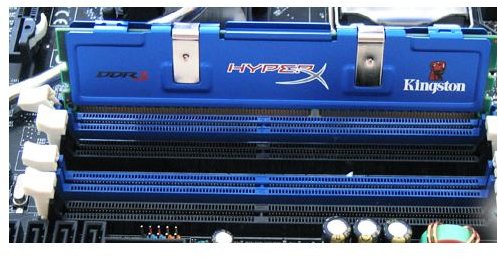Motherboard Memory Compatability
Motherboard Memory Compatibility for Manufactured PCs
If you have a Dell, Gateway, HP, or other branded PC, you will need to check motherboard memory compatibility from your manufacturer’s website. Usually, this is a very simple process that involves finding the support page for your exact PC, and taking a look at the spec sheet. Here are some direct links to some support pages for popular PC manufacturers. Jump to the page for your PC’s manufacturer, and look up the model.
- Dell Computers
- HP Computers
- Gateway Computers
- Lenovo Computers
- IBM Computers
- Toshiba Computers
- Asus Computers
- Acer Computers
- eMachine Computers
- Sony Computers
If your PC manufacturer is not listed above, simply do a Google search for your manufacturer. It should turn up in one of the first couple listings in the search results. From there, locate the support page, where you will be able to download the user’s manual for your specific PC.
Although it’s always best to use the specs listed on your PC manufacturer’s website, you can use the Crucial RAM memory finder to find the recommended compatible memory for your PC.
Motherboard Memory Compatibility for Custom Built PCs
If you purchased a custom build PC, or have built your own PC, you will need to find out motherboard memory compatibility a bit differently. You will not be able to download a user manual for your actual PC, but you can likely download a user manual or spec sheet for your actual motherboard. To do so, navigate to your motherboard manufacturer’s website and locate the support page for your specific motherboard. Upon doing so, you should be given the option to download a motherboard manual, or download a spec sheet the motherboard.
Once you know what type of RAM your computer needs, or have found the information regarding motherboard memory compatibility for your specific motherboard, proceed on to learn more about the different types of RAM memory.
Motherboard Memory Compatability - RAM Types
Obviously, you can only use RAM memory that is compatible with your particular motherboard. RAM memory is a technology that evolves rather quickly. Thus, there are several different types of RAM that computers/motherboards can take. Although you should know exactly what type of memory your PC uses by downloading the user manual or spec sheet, the following guidelines will provide you some quick tips for finding the correct RAM memory for your PC.
- If you have a PC that is over 5 years old, there is a very good chance that it takes DDR RAM memory.
- If you have a PC that is over 2 years old, there is a very good chance that it takes DDR2 RAM memory.
- If you have a PC that is newer, and less than 2 years old, there is a very good chance that it takes DDR3 RAM memory.
The DDR type, meaning DDR, DDR2, or DDR3, is very important to note, because DDR, DDR2, and DDR3 motherboards are not interchangeable, or compatible with each other. For example, you cannot use DDR3 RAM memory in a PC that supports DDR2 RAM memory.
After you have figured out the DDR type, you now need to consider the speed of the RAM memory. Upon shopping around for different RAM memory, you will notice that RAM is listed as something like 2x 2GB DDR3 1066 RAM. Here is a breakdown of what that means:
2x 2GB = two 2GB RAM modules.
DDR3 = the type of RAM memory. Only motherboards with DDR3 RAM memory slots will work.
1066 = refers to the speed of the RAM.
The best way to upgrade RAM memory for your computer is to simply consult the user guide to see what is already in your PC. After that, buy higher capacity RAM of the same type. For example, if your PC or motherboard is currently using 2GB of DDR2 667 RAM memory, you may want to upgrade to 4GB of DDR2 667 RAM memory.
*Laptop RAM memory is different that desktop PC RAM, and sometimes may appear to be the same thing. For example, you could have 2x 2GB DDR3 1066 RAM memory for both a latop and desktop. However, they would be completely different sizes. Be sure that you get laptop RAM if you are upgrading a laptop, notebook, or netbook.*
